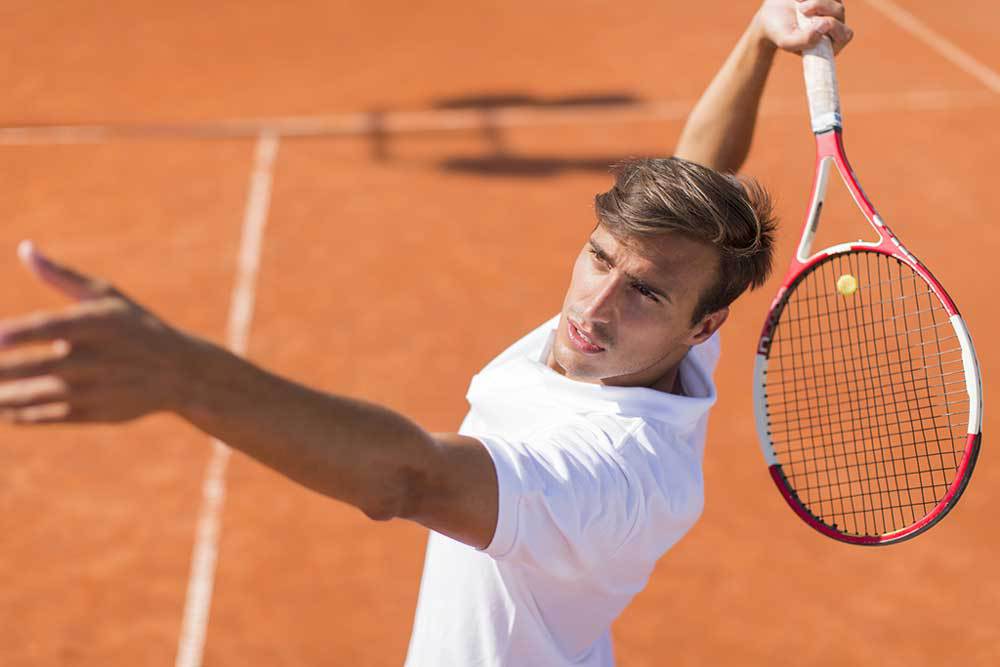Athletes who participate in overhead sports and physical activities, including baseball pitchers, tennis, swimming, water polo and throwing sport athletes, exert tremendous amounts of stress on their shoulders and its surrounding structures when they participate in their specific athletics. For instance, an elite baseball pitcher’s arm has been recorded at over 7000 degrees/second, which arguably makes it the fastest human body movement from any sport.
Shoulder pain is a common symptom among the overhead athlete where throwing athletes will generally complain of dead arm, defined as a condition which restricts them from throwing at pre-injury speeds or control. SLAP, or superior labrum anterior-posterior, lesions are common causes of this type of dysfunction.
A SLAP tear occurs on the glenoid labrum from the anterior to posterior angle of the long head of the biceps tendon. The glenoid labrum is a wedge-shaped fibrous tissue structure that is attached to the edge of the glenoid, functioning to deepen the glenoid cavity to improve stability as well as implement muscular control and proprioception. The anatomy of the proximal long head bicep tendon may actually vary but, in a majority of cases, it originates from the posterior superior labrum and it is broader and innervated more sensory fibres than the distal tendon.
Sourced through Scoop.it from: www.elpasobackclinic.com
During overhead throwing sports, shoulder injuries can be a common complication frequently diagnosed among athletes by many healthcare professionals. SLAP lesions, also known as anterior to posterior superior labral tears, can tremendously affect the athlete’s performance, greatly restricting the shoulder’s natural capabilities, including altering their original strength, flexibility and mobility. For more information, please feel free to ask Dr. Jimenez or contact us at (915) 850-0900.
Post Disclaimers
Professional Scope of Practice *
The information herein on "Anterior to Posterior Superior Labral Tears in Athletes" is not intended to replace a one-on-one relationship with a qualified health care professional or licensed physician and is not medical advice. We encourage you to make healthcare decisions based on your research and partnership with a qualified healthcare professional.
Blog Information & Scope Discussions
Our information scope is limited to Chiropractic, musculoskeletal, physical medicines, wellness, contributing etiological viscerosomatic disturbances within clinical presentations, associated somatovisceral reflex clinical dynamics, subluxation complexes, sensitive health issues, and/or functional medicine articles, topics, and discussions.
We provide and present clinical collaboration with specialists from various disciplines. Each specialist is governed by their professional scope of practice and their jurisdiction of licensure. We use functional health & wellness protocols to treat and support care for the injuries or disorders of the musculoskeletal system.
Our videos, posts, topics, subjects, and insights cover clinical matters, issues, and topics that relate to and directly or indirectly support our clinical scope of practice.*
Our office has reasonably attempted to provide supportive citations and has identified the relevant research study or studies supporting our posts. We provide copies of supporting research studies available to regulatory boards and the public upon request.
We understand that we cover matters that require an additional explanation of how it may assist in a particular care plan or treatment protocol; therefore, to further discuss the subject matter above, please feel free to ask Dr. Alex Jimenez, DC, or contact us at 915-850-0900.
We are here to help you and your family.
Blessings
Dr. Alex Jimenez DC, MSACP, RN*, CCST, IFMCP*, CIFM*, ATN*
email: coach@elpasofunctionalmedicine.com
Licensed as a Doctor of Chiropractic (DC) in Texas & New Mexico*
Texas DC License # TX5807, New Mexico DC License # NM-DC2182
Licensed as a Registered Nurse (RN*) in Florida
Florida License RN License # RN9617241 (Control No. 3558029)
Compact Status: Multi-State License: Authorized to Practice in 40 States*
Presently Matriculated: ICHS: MSN* FNP (Family Nurse Practitioner Program)
Dr. Alex Jimenez DC, MSACP, RN* CIFM*, IFMCP*, ATN*, CCST
My Digital Business Card






 Again, I Welcome You.
Again, I Welcome You.
Comments are closed.